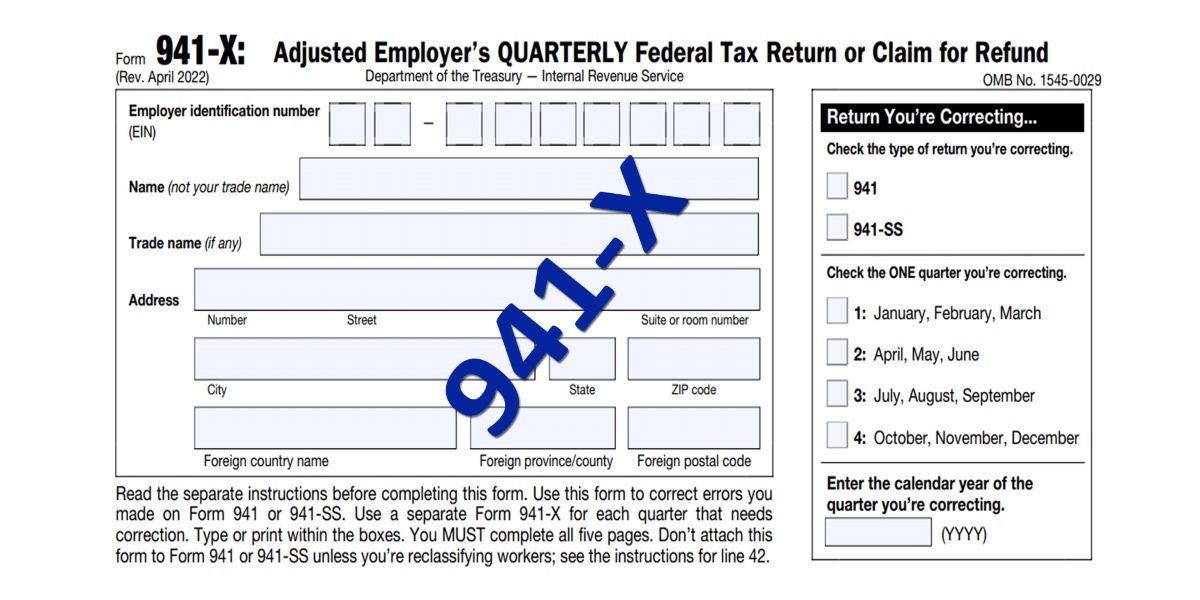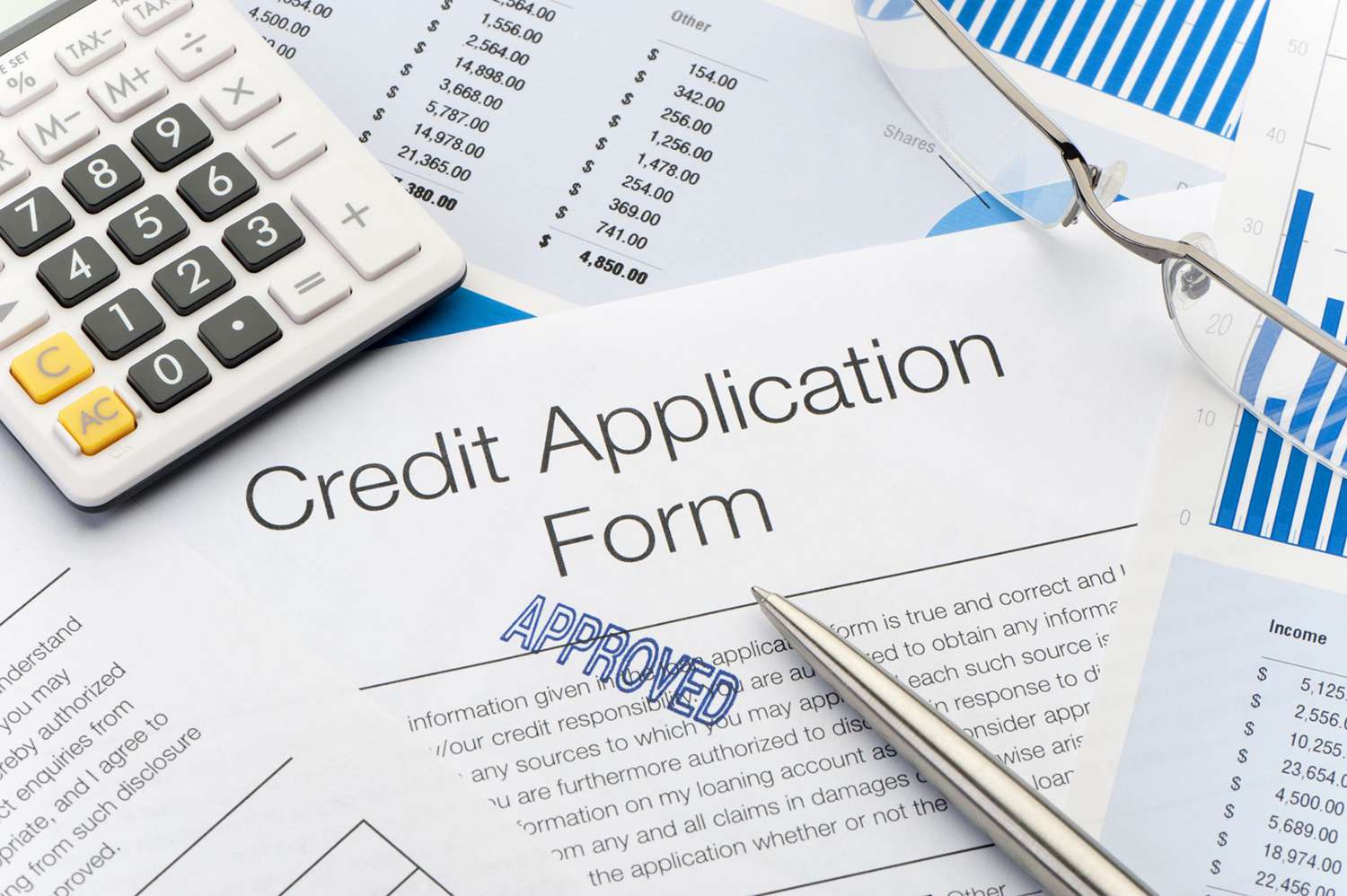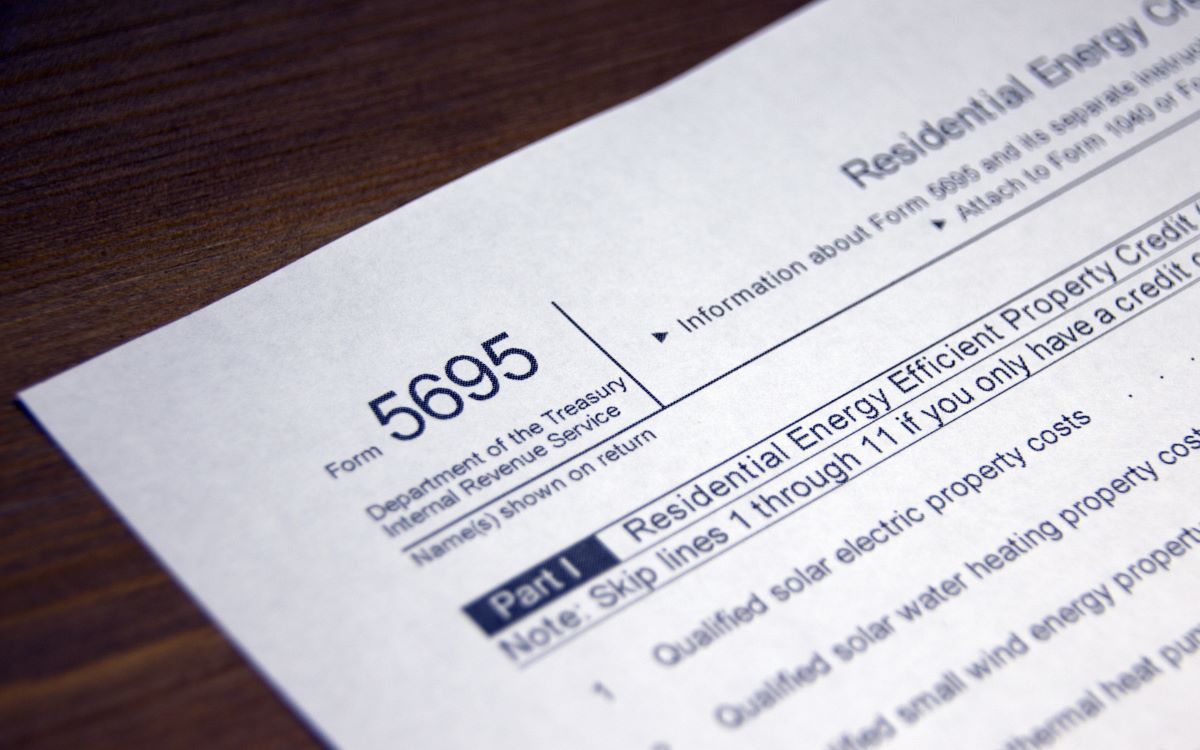

Finance
How To Fill Out Savings Deposit Slip
Modified: February 21, 2024
Learn how to correctly fill out a savings deposit slip and manage your finance efficiently. Step-by-step guide with tips and tricks to optimize your savings.
(Many of the links in this article redirect to a specific reviewed product. Your purchase of these products through affiliate links helps to generate commission for LiveWell, at no extra cost. Learn more)
Table of Contents
- Introduction
- Step 1: Gather Required Information
- Step 2: Identify the Bank and Account Details
- Step 3: Fill Out the Account Holder Information
- Step 4: Enter the Deposit Amount
- Step 5: Specify Currency and Denominations
- Step 6: Indicate Cash and Check Breakdown
- Step 7: Calculate Cash Totals
- Step 8: Verify and Review the Information
- Step 9: Sign the Deposit Slip
- Step 10: Retain Your Copy and Submit Deposit
Introduction
Welcome to our guide on how to fill out a savings deposit slip! Whether you’re a first-time depositor or simply need a refresher, understanding the process of completing a deposit slip is essential for managing your finances effectively.
A deposit slip is a small piece of paper that serves as a record of the funds you are depositing into your savings account. It includes important details such as your account number, the amount being deposited, and whether the deposit consists of cash or checks. By accurately completing a deposit slip, you ensure that your funds are properly credited to your account.
In this step-by-step guide, we will walk you through each section of the deposit slip and provide helpful tips along the way. By the end of this article, you will be equipped with the knowledge and confidence to fill out a deposit slip with ease.
It’s important to note that while the overall process of filling out deposit slips remains largely similar across different banks and financial institutions, there may be slight variations in the format or sections required. Therefore, it’s always a good idea to refer to the specific instructions or guidelines provided by your bank.
Remember, accuracy is key when completing a deposit slip. Providing correct information ensures that your deposit is accurately recorded and saves you time and potential complications in the future.
Step 1: Gather Required Information
Before you start filling out a savings deposit slip, make sure you have the necessary information readily available. This will save you time and help ensure the accuracy of your deposit. Here are the key pieces of information you will need:
- Account Number: Locate your savings account number. This can typically be found on your bank statement, online banking portal, or on the front of your savings account passbook, if you have one.
- Personal Information: Have your personal details ready, including your full name, address, and contact information. Some deposit slips may also require your Social Security number or taxpayer identification number.
- Identification: Depending on the bank’s policies, you may need to present a valid form of identification, such as a driver’s license, passport, or government-issued ID. While not necessary for filling out the deposit slip, it’s helpful to have it handy for verification purposes.
- Deposit Amount: Determine the amount you wish to deposit into your savings account. It can be a combination of cash and checks, so make sure you have an accurate total.
- Currency and Denominations: If you are depositing cash, decide on the currency type (such as US dollars, euros, or pounds) and the denominations of the bills you are depositing.
By gathering all the necessary information beforehand, you’ll streamline the process and minimize the chances of making errors when filling out the deposit slip.
It’s important to note that some banks provide pre-filled deposit slips with your account details. In such cases, double-check the information to ensure its accuracy and make any necessary updates or corrections.
Now that you have the required information in hand, it’s time to move on to the next step: identifying the bank and account details on the deposit slip.
Step 2: Identify the Bank and Account Details
After gathering the necessary information, the next step is to identify the bank and account details on the deposit slip. This section ensures that the deposit is credited to the correct savings account. Here’s what you need to do:
- Bank Name: Locate the space provided for the bank name on the deposit slip. Write the full and official name of the bank where your savings account is held. This information is typically found at the top or in the header section of the deposit slip.
- Branch Address: Some deposit slips may require you to provide the address of the bank branch where you are making the deposit. If necessary, write the full address in the designated space. However, not all deposit slips have this requirement.
- Account Holder’s Name: In the designated area, write your full name or the name of the account holder as it appears on your bank records. Make sure to write it exactly as specified by your bank to avoid any confusion or rejection of the deposit.
- Account Number: Locate the space provided for the account number and enter your savings account number accurately. Take extra care to write each digit clearly to prevent any errors that may affect the deposit. Double-check the number against your bank records to ensure accuracy.
Accuracy is critical when filling out this section of the deposit slip. Mistakes in the bank name, branch address, or account number can result in the deposit being credited to the wrong account. Take your time and verify the information before moving on to the next step.
Once you have accurately identified the bank and account details, you are ready to proceed to the next section of the deposit slip: entering the account holder information.
Step 3: Fill Out the Account Holder Information
Now that you have identified the bank and account details on the deposit slip, it’s time to fill out the account holder information. This section ensures that the deposit is attributed to the correct account holder. Follow these steps:
- Full Name: In the designated space, write your full name as it appears on your bank records. Use your legal name and avoid using nicknames or abbreviations. If you’re depositing on behalf of someone else, write their full name.
- Address: Write your complete residential or mailing address in the provided area. Include the street address, city, state, and ZIP code. If you recently moved and your current address is different from the one on file with the bank, indicate the updated address.
- Contact Information: Provide your contact details, such as phone number or email address, if required. This information helps the bank reach out to you if there are any issues or questions regarding your deposit.
- Date: Write the current date in the designated space. This serves as a record of when the deposit was made.
It’s important to write your account holder information legibly and accurately. Illegible or incorrect information may lead to delays or difficulties in processing your deposit.
Some deposit slips may also have additional fields for other information, such as your Social Security number or taxpayer identification number. If these fields are present and required, provide the requested information accordingly.
Once you have filled out the account holder information, you can proceed to the next step: entering the deposit amount.
Step 4: Enter the Deposit Amount
After filling out the account holder information, the next step is to enter the deposit amount on the deposit slip. This section ensures that the bank knows the exact amount you are depositing. Follow these guidelines:
- Total Deposit Amount: Locate the space provided for the total deposit amount. Write the amount you wish to deposit. If you are depositing multiple checks, include the sum of all the checks along with any cash you are depositing.
- Decimal Point and Cents: If you are depositing a partial dollar amount (cents), make sure to include the decimal point and the correct number of cents. For example, if you are depositing $100.50, write it as “100.50” or “100.50/100” to indicate the decimal point and cents.
Accuracy is crucial when entering the deposit amount. Mistakes in this section can result in the incorrect recording of your deposit, causing discrepancies in your account balance. Double-check the amount before proceeding to the next step.
It’s important to note that some deposit slips may have separate fields for cash and check deposits. If this is the case, enter the specific amounts for cash and checks in their respective fields. Ensure that you accurately indicate the cash amount and list the individual check amounts if applicable.
Once you have entered the deposit amount, you are ready to move on to the next step: specifying the currency and denominations of cash you are depositing.
Step 5: Specify Currency and Denominations
Now that you have entered the deposit amount, the next step is to specify the currency and denominations of the cash you are depositing. This section ensures that the bank knows the exact breakdown of the cash portion of your deposit. Follow these guidelines:
- Currency Type: If you are depositing cash in a different currency than the local currency, specify the currency type. For example, if you are depositing US dollars, write “USD” or “US Dollars” in the designated area. If you are depositing the local currency, such as euros or pounds, no additional clarification is necessary.
- Denominations: Indicate the denominations of the bills in the designated area. For example, if you are depositing $100 bills, write “100” in the appropriate space. If you have a mix of different denominations, specify the number of bills for each denomination separately. This breakdown helps the bank count and verify the cash you are depositing accurately.
It’s important to be as specific as possible when specifying the currency and denominations. This ensures that the bank processes your deposit correctly and avoids any confusion or errors in counting the cash.
Remember, if you are not depositing any cash and are only depositing checks, you can skip this step and move on to the next section.
Once you have specified the currency and denominations, you can proceed to the next step: indicating the cash and check breakdown.
Step 6: Indicate Cash and Check Breakdown
After specifying the currency and denominations, the next step is to indicate the breakdown between cash and checks on the deposit slip. This section helps the bank differentiate between the two types of deposits and process them accordingly. Follow these guidelines:
- Cash: If you are depositing cash, locate the space provided for cash and write the total amount of cash being deposited. This includes the sum of all the bills you specified in the previous step.
- Checks: If you are depositing checks, locate the space provided for checks. Write the total number of checks being deposited. Some deposit slips may have individual fields for each check, where you can write the check number and the amount for each check separately.
It’s important to accurately indicate the breakdown between cash and checks. This ensures that the bank processes each type of deposit correctly and avoids any confusion or misallocation of funds.
Remember to double-check the amounts you write for both cash and checks to ensure accuracy. Mistakes in this section can result in discrepancies in your account balance or delays in processing your deposit.
Once you have indicated the cash and check breakdown, you can proceed to the next step: calculating the cash totals.
Step 7: Calculate Cash Totals
After indicating the cash and check breakdown, the next step is to calculate the cash totals on the deposit slip. This section helps the bank verify the accuracy of the cash deposit and ensures that the total matches the amount you have indicated. Follow these guidelines:
- Add Up Cash Amounts: If you have specified multiple denominations of cash in the previous steps, add up the individual amounts to calculate the total cash deposit. Write the total amount in the designated space provided for cash totals.
- Verify Cash Count: If you have already counted the cash prior to filling out the deposit slip, double-check your calculations to ensure accuracy. It’s important for the total cash amount to match the sum of the denominations you specified earlier.
Accuracy is essential when calculating the cash totals. Mistakes can lead to discrepancies in your account balance or delays in processing your deposit. Take your time to verify the calculations to ensure that the cash totals are correctly recorded on the deposit slip.
If you are not depositing any cash and are only depositing checks, you can skip this step and move on to the next section.
Once you have calculated the cash totals, you can proceed to the next step: verifying and reviewing the information on the deposit slip.
Step 8: Verify and Review the Information
After completing the previous steps on the deposit slip, it’s crucial to take a moment to verify and review all the information you have entered. This step ensures the accuracy and completeness of the deposit slip before submitting it to the bank. Follow these guidelines:
- Check for Accuracy: Carefully review each section of the deposit slip, including the bank and account details, account holder information, deposit amount, currency and denominations, cash and check breakdown, and any calculated totals. Check for any errors, missing information, or inconsistencies.
- Ensure Legibility: Make sure that all the information on the deposit slip is legible and easy to read. Illegible handwriting may cause confusion or delays in processing your deposit.
- Confirm Compatibility: Ensure that the information on the deposit slip matches the records and requirements of your bank. Different banks may have variations in the format or specific fields they require on a deposit slip.
- Double-Check Amounts: Verify that the total deposit amount matches the amount you intended to deposit. Confirm that the cash totals, check amounts, and any calculated sums are accurate.
By taking the time to verify and review the information on the deposit slip, you minimize the risk of errors or discrepancies. This attention to detail helps ensure a smooth and accurate processing of your deposit.
If you spot any mistakes or omissions during the review process, make the necessary corrections neatly and clearly on the deposit slip. It’s important to avoid using correction fluids or scribbling out information, as it may cause confusion or rejection of the deposit slip. Instead, make clean and legible corrections.
Once you have thoroughly verified and reviewed the information, it’s time to move on to the next step: signing the deposit slip.
Step 9: Sign the Deposit Slip
After reviewing and confirming the accuracy of the information on the deposit slip, the next step is to sign the slip. Your signature serves as proof that you authorize the deposit and validate the information provided. Follow these guidelines:
- Signature Line: Locate the designated signature line on the deposit slip. It is typically found at the bottom of the slip.
- Sign Clearly: Sign your name clearly and legibly on the signature line. Use your usual signature to ensure consistency with your bank records.
It’s important to sign the deposit slip using the same signature you have on file with the bank. This helps the bank verify your identity and ensures the deposit is associated with the correct account. Avoid using a different or altered signature to prevent confusion or potential rejection of the deposit slip.
By signing the deposit slip, you acknowledge that the information provided is accurate and that you authorize the bank to process the deposit accordingly. It serves as a legal representation of your consent and authorization.
Once you have signed the deposit slip, it’s time for the final step: retaining your copy of the slip and submitting the deposit.
Step 10: Retain Your Copy and Submit Deposit
After signing the deposit slip, the final step is to retain your copy of the slip and submit your deposit to the bank. Follow these guidelines:
- Retention: Tear off or detach the customer copy or duplicate copy of the deposit slip. This is your proof of the deposit transaction and serves as a record for your own reference.
- Supporting Documents: Gather any supporting documents such as checks, cash, or money orders that need to be submitted along with the deposit slip. Organize them securely to prevent loss or damage during transit.
- Submission: Visit your bank branch or use a bank deposit drop-off or automated teller machine (ATM) if available. Hand over the deposit slip and supporting documents to a bank teller or follow the instructions for depositing through an ATM.
- Confirmation: If you submitted your deposit to a bank teller, they will provide you with a receipt or acknowledge the deposit on your account statement. Keep this receipt in a safe place as additional proof of the transaction.
Retaining your copy of the deposit slip is crucial for your records. It allows you to track and reconcile your deposits with your account statements, helping you maintain an accurate financial overview.
Ensure that you securely store any supporting documents associated with the deposit, such as checks or money orders. If depositing through an ATM, follow the prompts and instructions carefully to ensure a successful deposit.
Lastly, confirm the deposit’s completion by reviewing your account statements or online banking portal. This will help ensure that the funds are properly credited to your account.
By retaining your copy of the deposit slip and submitting your deposit, you complete the process of depositing funds into your savings account.
Congratulations! You have successfully learned how to fill out a savings deposit slip and submit your deposit. By following these steps, you can confidently manage your finances and keep track of your savings.














